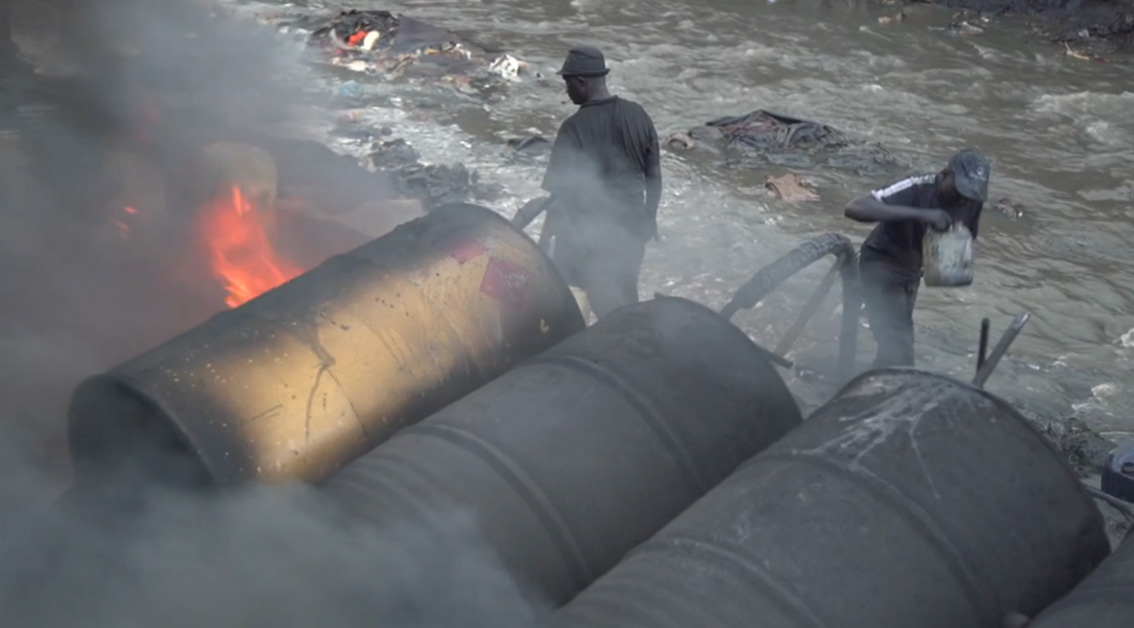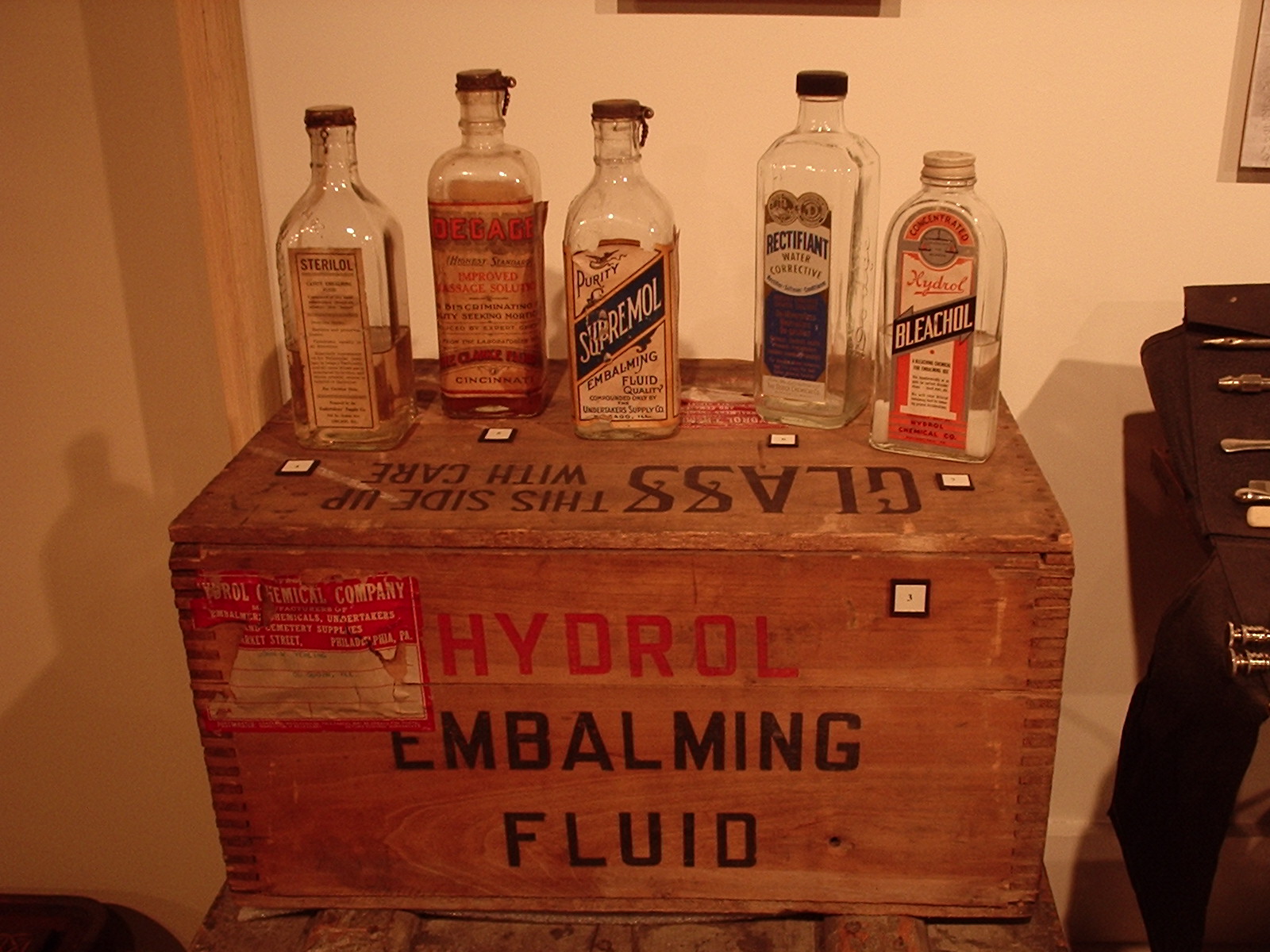|
Changaa
Changaa or Chang'aa is a traditional home-brewed spirit, popular in Kenya. It is made by fermentation and distillation from grains like millet, maize and sorghum, and is very potent. Regulation After being illegal in Kenya for many years, the Kenyan government legalised the traditional home-brewed spirit in 2010, in an effort to take business away from establishments where toxic chemicals are added to the brew to make it stronger. Under the new law, chang'aa must be manufactured, distributed and sold in glass bottles, and retailers must display health warning signs. Sale to individuals under age 18 is still prohibited, as is sale through automatic vending machines. Anyone making or selling adulterated chang'aa risks penalties of five million shillings, five years in jail, or both. Chang'aa is usually much cheaper and stronger than other alcoholic drinks, making it the beverage of choice for many. Production and distribution Its production and distribution in urban slums has to ... [...More Info...] [...Related Items...] OR: [Wikipedia] [Google] [Baidu] |
Waragi
Waragi (pronounced , also known as kasese) is a generic term in Uganda for domestic distilled beverages. Waragi is also given different names, depending on region of origin, the distillation process, or both. Waragi is known as a form of homemade Gin. The term "Waragi" is synonymous with locally distilled gin throughout Uganda. However, Uganda Waragi is a particular brand of industrially distilled gin produced by East African Breweries Limited. Other brands of distilled gin which are done by individuals at small scale are also available, but they are different from each other. The most common are: 1. "Kasese-Kasese" which was originally distilled in the district of Kasese in western Uganda and sold all over the country; 2. "Arege mogo" which first originated in Lira district in northern Uganda made and sold all over the country . These two brands "waragi" have different tastes and aromas. The distillation process in both cases produce highly distilled gin at the level produced ind ... [...More Info...] [...Related Items...] OR: [Wikipedia] [Google] [Baidu] |
Battery Acid
Sulfuric acid (American spelling and the preferred IUPAC name) or sulphuric acid (English in the Commonwealth of Nations, Commonwealth spelling), known in antiquity as oil of vitriol, is a mineral acid composed of the elements sulfur, oxygen, and hydrogen, with the molecular formula . It is a colorless, odorless, and Viscosity, viscous liquid that is Miscibility, miscible with water. Pure sulfuric acid does not occur naturally due to its Dehydration reaction, strong affinity to water vapor; it is Hygroscopy, hygroscopic and readily absorbs water vapor from the Atmosphere of Earth, air. Concentrated sulfuric acid is a strong oxidant with powerful dehydrating properties, making it highly corrosive towards other materials, from rocks to metals. Phosphorus pentoxide is a notable exception in that it is not dehydrated by sulfuric acid but, to the contrary, dehydrates sulfuric acid to sulfur trioxide. Upon addition of sulfuric acid to water, a considerable amount of heat is releas ... [...More Info...] [...Related Items...] OR: [Wikipedia] [Google] [Baidu] |
Kenyan Cuisine
The culture of Kenya consists of multiple traditions and trends without a single prominent culture identifying the country. Kenyan cultural heritage and modern expressions of culture instead consist of various cultures, shaped and practiced by the country's different communities. However, a different scholarly opinion from Prof. Olubayi Olubayi of Kenya states that "a distinct national culture of Kenya has emerged and continues to grow stronger as it simultaneously borrows from, reorganizes, and lends to, the 50 ancient ethnic cultures of Kenya. The emerging national culture of Kenya has several strong dimensions that include the rise of a national language, the full acceptance of Kenyan as an identity, the success of a postcolonial constitutional order, the ascendancy of ecumenical religions, the urban dominance of multiethnic cultural productions, and increased national cohesion". History Kenyan culture has evolved over time, in the course of Bantu and Nilotic immig ... [...More Info...] [...Related Items...] OR: [Wikipedia] [Google] [Baidu] |
Distilled Drinks
Liquor ( , sometimes hard liquor), spirits, distilled spirits, or spiritous liquor are alcoholic drinks produced by the distillation of grains, fruits, vegetables, or sugar that have already gone through alcoholic fermentation. While the word ''liquor'' ordinarily refers to distilled alcoholic spirits rather than drinks produced by fermentation alone, it can sometimes be used more broadly to refer to any alcoholic beverage (or even non-alcoholic ones produced by distillation or some other practices, such as the brewed liquor of a tea). The distillation process concentrates the alcohol, the resulting condensate has an increased alcohol by volume. As liquors contain significantly more alcohol (ethanol) than other alcoholic drinks, they are considered "harder". In North America, the term ''hard liquor'' is sometimes used to distinguish distilled alcoholic drinks from non-distilled ones, whereas the term ''spirits'' is more commonly used in the United Kingdom. Some examples of ... [...More Info...] [...Related Items...] OR: [Wikipedia] [Google] [Baidu] |
Dholuo
The Dholuo dialect () or ''Nilotic Kavirondo'', is a dialect of the Luo group of Nilotic languages, spoken by about 4.2 million Luo people of Kenya and Tanzania, who occupy parts of the eastern shore of Nam Lolwe (Lake Victoria) and areas to the south. It is used for broadcasts on Ramogi TV and KBC ( Kenya Broadcasting Corporation, formerly the ''Voice of Kenya''). Dholuo is mutually intelligible with Alur, Acholi, Adhola and Lango of Uganda. Dholuo and the aforementioned Uganda languages are all linguistically related to Dholuo of South Sudan and Anuak of Ethiopia due to common ethnic origins of the larger Luo peoples who speak Luo languages. It is estimated that Dholuo has 93% lexical similarity with Dhopadhola (Adhola), 90% with Leb Alur (Alur), 83% with Leb Achol (Acholi) and 81% with Leb Lango. However, these are often counted as separate languages despite common ethnic origins due to linguistic shift occasioned by geographical movement. Literacy (''Of the Luo f ... [...More Info...] [...Related Items...] OR: [Wikipedia] [Google] [Baidu] |
Kisumu
Kisumu ( ) is the third-largest city in Kenya located in the Lake Victoria area in the former Nyanza Province. It is the second-largest city after Kampala in the Lake Victoria Basin. The city has a population of slightly over 600,000. The metro region, including Maseno and Ahero, has a population of 1,155,574 people (560,942 males, 594,609 females and 23 intersex) according to the 2019 Kenya Population and Housing Census which was conducted by the Kenya National Bureau of Statistics. Apart from being an important political city, it is one of the premier industrial and commercial centres in Kenya. It is also an intellectual city with many PhDs. The city is currently undergoing an urban rejuvenation of the downtown and lower town which includes modernizing the lake front, decongesting main streets, and making the streets pedestrian-friendly. Culturally, Kisumu serves as the centre of the Luo people of East Africa. It was the most prominent urban centre in the pre-colonia ... [...More Info...] [...Related Items...] OR: [Wikipedia] [Google] [Baidu] |
Sewage
Sewage (or domestic sewage, domestic wastewater, municipal wastewater) is a type of wastewater that is produced by a community of people. It is typically transported through a sewerage, sewer system. Sewage consists of wastewater discharged from residences and from commercial, institutional and public facilities that exist in the locality. Text was copied from this source, which is available under a creativecommons:by/4.0/, Creative Commons Attribution 4.0 International License Sub-types of sewage are greywater (from sinks, bathtubs, showers, dishwashers, and clothes washers) and blackwater (waste), blackwater (the water used to flush toilets, combined with the human waste that it flushes away). Sewage also contains soaps and detergents. Food waste may be present from dishwashing, and food quantities may be increased where garbage disposal units are used. In regions where toilet paper is used rather than bidets, that paper is also added to the sewage. Sewage contains macro-pollu ... [...More Info...] [...Related Items...] OR: [Wikipedia] [Google] [Baidu] |
Methanol
Methanol (also called methyl alcohol and wood spirit, amongst other names) is an organic chemical compound and the simplest aliphatic Alcohol (chemistry), alcohol, with the chemical formula (a methyl group linked to a hydroxyl group, often abbreviated as MeOH). It is a light, Volatility (chemistry), volatile, colorless and flammable liquid with a distinctive alcoholic odor similar to that of ethanol (potable alcohol), but is more acutely toxic than the latter. Methanol acquired the name wood alcohol because it was once produced through destructive distillation of wood. Today, methanol is mainly produced industrially by hydrogenation of carbon monoxide. Methanol consists of a methyl group linked to a polar hydroxyl group. With more than 20 million tons produced annually, it is used as a Precursor (chemistry), precursor to other commodity chemicals, including formaldehyde, acetic acid, methyl tert-butyl ether, methyl ''tert''-butyl ether, methyl benzoate, anisole, peroxyacids, ... [...More Info...] [...Related Items...] OR: [Wikipedia] [Google] [Baidu] |
Embalming Fluid
Embalming chemicals are a variety of preservatives, sanitising and disinfectant agents, and additives used in modern embalming to temporarily prevent decomposition and restore a natural appearance for viewing a body after death in funeral homes. A mixture of these chemicals is known as embalming fluid and is used to preserve bodies of deceased persons for both funeral purposes and in medical research in anatomical laboratories. The period for which a body is embalmed is dependent on time, expertise of the embalmer and factors regarding duration of stay and purpose. Typically, embalming fluid contains a mixture of formaldehyde, glutaraldehyde, methanol, and other solvents. The formaldehyde content generally ranges from 5–37% and the methanol content may range from 9–56%. In the United States alone, about 20 million liters (roughly 5.3 million gallons) of embalming fluid are used every year.Sehee, Joe (2007)Green Burial: It's Only Natural PERC Reports, Winter 2007. Re ... [...More Info...] [...Related Items...] OR: [Wikipedia] [Google] [Baidu] |
Kenya
Kenya, officially the Republic of Kenya, is a country located in East Africa. With an estimated population of more than 52.4 million as of mid-2024, Kenya is the 27th-most-populous country in the world and the 7th most populous in Africa. Kenya's capital and largest city is Nairobi. Its second-largest and oldest city is Mombasa, a major port city located on Mombasa Island. Other major cities within the country include Kisumu, Nakuru & Eldoret. Going clockwise, Kenya is bordered by South Sudan to the northwest (though much of that border includes the disputed Ilemi Triangle), Ethiopia to the north, Somalia to the east, the Indian Ocean to the southeast, Tanzania to the southwest, and Lake Victoria and Uganda to the west. Kenya's geography, climate and population vary widely. In western, rift valley counties, the landscape includes cold, snow-capped mountaintops (such as Batian, Nelion and Point Lenana on Mount Kenya) with vast surrounding forests, wildlife and ... [...More Info...] [...Related Items...] OR: [Wikipedia] [Google] [Baidu] |
Jet Fuel
Jet fuel or aviation turbine fuel (ATF, also abbreviated avtur) is a type of aviation fuel designed for use in aircraft powered by Gas turbine, gas-turbine engines. It is colorless to straw-colored in appearance. The most commonly used fuels for commercial aviation are Jet A and Jet A-1, which are produced to a standardized international specification. The only other jet fuel commonly used in civilian turbine-engine powered aviation is Jet B, which is used for its enhanced cold-weather performance. Jet fuel is a mixture of a variety of hydrocarbons. Because the exact composition of jet fuel varies widely based on petroleum source, it is impossible to define jet fuel as a ratio of specific hydrocarbons. Jet fuel is therefore defined as a performance specification rather than a chemical compound. Furthermore, the range of molecular mass between hydrocarbons (or different carbon numbers) is defined by the requirements for the product, such as the freezing point or smoke point. Keros ... [...More Info...] [...Related Items...] OR: [Wikipedia] [Google] [Baidu] |









